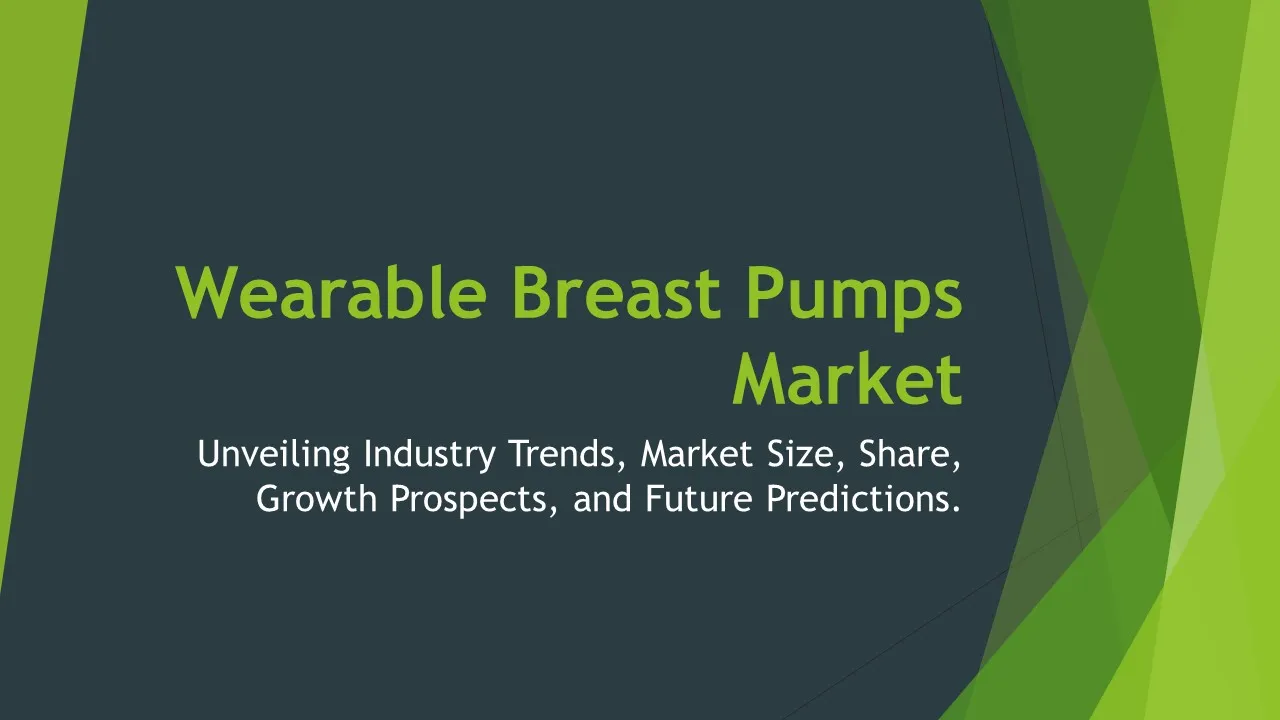Extended Wear Contact Lenses
Extended Wear Contact Lenses Market Segments - by Product Type (Silicone Hydrogel Lenses, PMMA Lenses, Hybrid Lenses, Gas Permeable Lenses, and Others), Application (Therapeutic Lenses, Corrective Lenses, Cosmetic Lenses, Prosthetic Lenses, and Others), Distribution Channel (Online Retailers, Eye Care Clinics, Optical Stores, Drug Stores, and Others), Material Type (Silicone Hydrogel, Hydrogel, PMMA, Fluorosilicone Acrylate, and Others), and Region (North America, Europe, Asia Pacific, Latin America, Middle East & Africa) - Global Industry Analysis, Growth, Share, Size, Trends, and Forecast 2025-2035
- Report Preview
- Table Of Content
- Segments
- Methodology
Extended Wear Contact Lenses Market Outlook
The global extended wear contact lenses market was valued at approximately USD 3.5 billion in 2023 and is projected to grow at a compound annual growth rate (CAGR) of around 6.8% from 2025 to 2035. This growth can be attributed to several factors including the increasing prevalence of vision disorders, a rising geriatric population, and growing consumer awareness regarding eye care. Moreover, advancements in lens technology, such as improved oxygen permeability and hydrating agents, are making extended wear options more comfortable and safer for users. The rising trend of online shopping has further facilitated access to extended wear lenses, driving market demand. Additionally, the shift towards cosmetic and therapeutic lenses, alongside corrective options, is contributing to the market's expansion.
Growth Factor of the Market
The extended wear contact lenses market is experiencing significant growth due to the rising number of patients with myopia, hyperopia, and astigmatism, leading to increased demand for corrective solutions. Additionally, the convenience and flexibility offered by extended wear lenses are appealing to a modern lifestyle where users prefer undisturbed vision correction without the need for daily lens maintenance. Technological advancements in lens materials have played a crucial role in enhancing comfort and safety, thus encouraging more individuals to switch from traditional lenses to extended wear options. Furthermore, the growing awareness about the importance of eye health and regular eye examinations is driving the market growth, as healthcare professionals increasingly recommend extended wear lenses for their patients. The rise of e-commerce platforms has also made it easier for consumers to purchase these lenses, further boosting market dynamics.
Key Highlights of the Market
- Projected CAGR of 6.8% from 2025 to 2035.
- Silicone hydrogel lenses dominate the product type segment.
- Online retailers are emerging as a significant distribution channel.
- North America holds a substantial share of the market due to high disposable income and advanced healthcare infrastructure.
- Increased adoption of therapeutic lenses, particularly for patients with chronic eye conditions.
By Product Type
Silicone Hydrogel Lenses :
Silicone hydrogel lenses are the most popular product type in the extended wear contact lenses market, primarily due to their superior oxygen permeability compared to traditional hydrogel lenses. This material allows for increased oxygen flow to the cornea, which is crucial for maintaining eye health during extended periods of wear. These lenses are designed for long-lasting comfort, enabling users to wear them continuously for up to 30 days without removal. The increased comfort level is leading to a greater adoption rate, particularly among those with busy lifestyles or those who find daily lens removal cumbersome. Manufacturers are continually innovating within this segment, focusing on enhancing moisture retention and reducing protein deposits, further driving market growth.
PMMA Lenses :
Polymethyl methacrylate (PMMA) lenses, while less popular than silicone hydrogel lenses for extended wear, still hold a niche market. These lenses are known for their rigidity and excellent optical clarity, making them a suitable option for individuals who may not tolerate soft lenses. The durability of PMMA lenses allows for long-term use, but they are less comfortable than their silicone hydrogel counterparts. As a result, they are mainly recommended for specific therapeutic applications or for patients with unique ocular conditions. Innovations in lens design and manufacturing processes are slowly improving the comfort levels of PMMA lenses, which may lead to wider acceptance in the market.
Hybrid Lenses :
Hybrid lenses combine the best features of both soft and rigid gas permeable lenses. They typically feature a central gas permeable zone surrounded by a soft skirt, which enhances comfort while providing excellent vision correction. Hybrid lenses are particularly popular among individuals with astigmatism or other vision correction needs that are not adequately addressed by traditional soft lenses. The unique design allows for extended wear without compromising on comfort or lens stability. As eye care professionals continue to advocate for personalized solutions tailored to individual patients, hybrid lenses are likely to see an increase in their market share, particularly in the extended wear segment.
Gas Permeable Lenses :
Gas permeable lenses are known for their ability to provide excellent vision correction and are often recommended for patients with higher prescriptions. They allow for a high level of oxygen transmission while maintaining a stable shape, which promotes better visual acuity. Though they are typically not as comfortable as soft lenses initially, they have been gaining traction in the extended wear category due to their long-term health benefits for the cornea. Users who successfully adapt to gas permeable lenses often find them to be an effective and durable alternative to soft lenses. The ongoing advancements in the materials used for these lenses continue to enhance comfort and usability, positively influencing their adoption in the market.
Others :
This category captures a range of other specialized extended wear contact lenses that do not fall under the primary types mentioned earlier. This can include toric lenses for astigmatism, specialty lenses designed for certain eye conditions, or customized lenses tailored for individual patients. The growing demand for personalized vision correction solutions is propelling this segment forward, as eye care professionals recognize the need for more specialized options. As innovations in lens technology continue to emerge, the market for these 'other' lenses is expected to expand, providing consumers with a wider array of choices to meet their specific needs.
By Application
Therapeutic Lenses :
Therapeutic lenses are specifically designed to address various ocular surface diseases and disorders, offering significant benefits to patients requiring extended wear for medical purposes. These lenses are often used to protect the cornea, manage conditions such as keratoconus, and aid in healing post-surgery. Their extended wear capabilities help improve patient comfort and reduce the frequency of lens changes, making them a convenient option for both patients and healthcare providers. The growing prevalence of eye conditions and the increasing number of surgeries performed globally are anticipated to drive the demand for therapeutic lenses, solidifying their position in the market.
Corrective Lenses :
Corrective lenses represent the largest segment in the extended wear contact lenses market, as they are utilized to correct common vision issues such as myopia, hyperopia, and astigmatism. These lenses provide users with a clear and comfortable vision solution for daily activities without the hassle of wearing glasses. The trend towards an active lifestyle, combined with the increasing reliance on digital devices, has led to a heightened demand for corrective lenses. With ongoing advancements in lens technology, including improved moisture retention and UV protection, the market for corrective extended wear lenses continues to expand.
Cosmetic Lenses :
Cosmetic lenses have gained popularity as fashion accessories, allowing users to change or enhance their eye color while benefiting from vision correction. These lenses are available in a range of designs and colors, enabling individuals to express their personal style. The demand for cosmetic lenses is driven by social media trends and increased consumer attention towards eye aesthetics. Extended wear cosmetic lenses offer the added convenience of long-lasting wear without frequent replacements, making them an attractive option for consumers. This segment's growth is expected to be significant as more people seek out products that cater to both vision correction and aesthetic appeal.
Prosthetic Lenses :
Prosthetic lenses are designed for patients who have lost an eye due to disease or trauma. These lenses help restore the appearance of the eye, offering both aesthetic and psychological benefits. Extended wear prosthetic lenses allow for continuous usage, which can enhance comfort and improve the quality of life for individuals with ocular prosthetics. As awareness regarding the availability and benefits of prosthetic lenses increases, along with advancements in fitting techniques and materials, this market segment is poised for growth.
Others :
This category includes niche applications for extended wear lenses that do not fit into the primary application segments outlined above. These may encompass specialized medical lenses used for specific ocular disorders, sports lenses designed for athletes, or other unique uses that require long-duration wear. The diversity of applications opens avenues for innovation and customization in the extended wear market. As consumer needs evolve, manufacturers are likely to explore new applications for extended wear lenses, thereby broadening the market's scope.
By Distribution Channel
Online Retailers :
Online retailers have become a vital distribution channel for extended wear contact lenses, providing consumers with convenience and competitive pricing. The growth of e-commerce has transformed how customers shop for eye care products, with many preferring the ease of ordering lenses from the comfort of their homes. Online platforms often offer a wider selection of products and the ability to compare prices, making them an attractive option for consumers. The COVID-19 pandemic further accelerated the shift towards online shopping, and this trend is expected to continue, driving the growth of this distribution channel in the extended wear contact lenses market.
Eye Care Clinics :
Eye care clinics remain a traditional yet crucial distribution channel for extended wear contact lenses. These clinics provide personalized services, ensuring that patients receive professional fitting and tailored recommendations for their specific vision needs. Eye care professionals play a critical role in educating patients about the benefits and risks associated with extended wear lenses, establishing trust and loyalty. With the increasing focus on eye health and regular check-ups, the demand for lenses through eye care clinics is expected to remain strong, contributing significantly to the overall market growth.
Optical Stores :
Optical stores serve as essential retail outlets for purchasing extended wear contact lenses, offering consumers the opportunity to physically browse products and receive immediate assistance from trained staff. These stores often provide a variety of lens options and brands, catering to different customer preferences. The personal interaction and expert guidance available in optical stores can lead to higher customer satisfaction and help in building long-term relationships with clients. As eye care becomes increasingly prioritized, optical stores are expected to maintain a steady presence in the market, appealing to consumers who value direct interaction.
Drug Stores :
Drug stores are also emerging as a significant distribution channel for extended wear contact lenses, primarily due to their accessibility and convenience. Many consumers prefer to purchase lenses while running other errands, making drug stores a convenient stop for eye care needs. As the range of products available at drug stores increases, including both prescription and non-prescription lenses, consumer awareness around eye health has contributed to their growth in this segment. Drug stores are also leveraging in-store promotions and discounts to attract customers, further enhancing their market presence.
Others :
This category encompasses various alternative channels for distributing extended wear contact lenses, including specialty eyewear retailers, health and wellness stores, and mail-order services. These channels provide unique shopping experiences and cater to specific consumer segments that may not be fully addressed by traditional retail outlets. As consumer preferences evolve, the 'others' category may see increased activity, driven by niche marketing strategies and unique offerings tailored to specific demographics. Innovations in logistics and distribution models could further enhance the performance of these alternative channels within the extended wear contact lenses market.
By Material Type
Silicone Hydrogel :
Silicone hydrogel is a widely used material for extended wear contact lenses, renowned for its high oxygen permeability and excellent moisture retention. This material promotes eye health and comfort, allowing wearers to keep the lenses in for longer durations without discomfort. The demand for silicone hydrogel lenses continues to rise, driven by their superior performance compared to traditional hydrogel lenses. Innovations in silicone hydrogel technology are focused on enhancing lens hydration and reducing complications, which are key factors influencing consumer preference.
Hydrogel :
Hydrogel lenses are softer and more flexible than rigid lenses, making them more comfortable for many users. While they offer less oxygen permeability compared to silicone hydrogel, advancements in hydrogel technology have improved their wearability. This material is still popular among consumers who prioritize comfort during short-term wear. However, the trend is shifting towards silicone hydrogel due to its extended wear capabilities and health benefits. Nevertheless, hydrogel lenses maintain a significant presence in the market, especially among those who prefer traditional options.
PMMA :
Polymethyl methacrylate (PMMA) lenses are rigid lenses known for their clarity and durability. Although they are not as common for extended wear as softer options, they still serve a niche market due to their excellent vision correction for high prescriptions. PMMA lenses offer a unique advantage in terms of longevity and scratch resistance, making them suitable for certain therapeutic applications. As the market evolves, PMMA lenses may see a resurgence due to ongoing innovations in material technology aimed at improving comfort and adaptability.
Fluorosilicone Acrylate :
Fluorosilicone acrylate materials are increasingly being used in the production of contact lenses, known for their exceptional oxygen permeability and resistance to deposits. These lenses provide a comfortable wearing experience and are particularly suitable for extended wear. Their unique chemical properties allow for better wettability and reduced dryness, making them an attractive option for consumers. As awareness of the benefits of fluorosilicone acrylate continues to grow, this material type is expected to expand its share in the extended wear contact lenses market.
Others :
This category encompasses various alternative materials used in the manufacturing of extended wear contact lenses that do not fit into the previously mentioned types. These may include specialized materials designed for specific applications or conditions. The demand for innovation in lens materials is driving research and development in this field, leading to the emergence of new options that cater to various consumer needs. As the market continues to evolve, the 'others' segment presents opportunities for manufacturers to explore unique materials that enhance comfort, safety, and performance.
By Region
North America is currently the leading region in the extended wear contact lenses market, holding a substantial market share due to high disposable income, advanced healthcare infrastructure, and increased awareness of eye health. The U.S. is particularly influential in this market, where a significant portion of the population relies on contact lenses for vision correction. The region's CAGR is estimated at around 6.5% through 2035, driven by the increasing prevalence of vision disorders and the demand for innovative lens technologies. Health insurance policies often cover vision care, encouraging consumers to seek out extended wear options. Furthermore, the presence of key manufacturers and continual advancements in lens technology are likely to sustain market growth in North America.
Europe stands as the second largest market for extended wear contact lenses, characterized by a well-established eyecare industry and a growing elderly population. The market is poised to experience a CAGR of 6.2% during the forecast period due to rising awareness about eye health and the benefits of extended wear lenses. Countries such as Germany, France, and the UK are driving growth, with increasing investments in healthcare infrastructure and a shift towards preventive care. Additionally, the growing trend of e-commerce in the region is enhancing the availability of extended wear lenses, further contributing to market expansion.
Opportunities
The extended wear contact lenses market is poised for several compelling growth opportunities as consumer preferences evolve and technology advances. One of the most significant opportunities lies in the development of smart contact lenses that integrate technology with vision correction. These innovative lenses could monitor critical health metrics, such as glucose levels for diabetes management, thereby revolutionizing the contact lens industry. Additionally, the increasing prevalence of digital eye strain due to prolonged device usage has created a demand for specialized lenses designed to mitigate these effects. Companies that can effectively address these emerging needs through product innovation and strategic marketing can capture significant market share and drive growth in the extended wear segment.
Another opportunity exists in expanding access to extended wear contact lenses in emerging markets. As disposable incomes rise in regions such as Asia Pacific and Latin America, there is an increasing demand for vision correction solutions. Companies can explore partnerships with local distributors and healthcare providers to penetrate these markets effectively. Furthermore, educating consumers about the benefits of extended wear lenses can foster brand loyalty and increase adoption rates. Tailoring marketing strategies to cater to local preferences and cultural nuances will be essential for success in these regions. By leveraging these opportunities, companies can enhance their market presence and drive overall growth in the extended wear contact lenses market.
Threats
While the extended wear contact lenses market presents numerous growth opportunities, it is also subject to various threats that could hinder its progress. One of the primary threats is the growing concern regarding the safety and potential complications associated with extended wear lenses. There have been documented cases of infections and corneal issues linked to improper usage or neglect in lens care. This apprehension may deter consumers from opting for extended wear options, especially among those who are new to contact lens wear. Additionally, regulatory challenges surrounding the approval of new lens materials and technologies can slow down innovation and limit market growth. Companies must prioritize consumer education and enforce stringent quality control measures to mitigate these risks and establish trust with their customer base.
Another significant threat to the extended wear contact lenses market is the increasing popularity of alternative vision correction methods, such as laser refractive surgery. Many consumers are opting for surgical procedures like LASIK to achieve permanent vision correction, thereby reducing their reliance on contact lenses. The perception that surgical options are safer and more effective can pose a challenge for the market. To combat this, manufacturers of extended wear lenses need to focus on improving product safety, comfort, and efficacy. Continuous research and development efforts that emphasize advancements in lens technology will be crucial in keeping consumers engaged and fostering brand loyalty amidst growing competition from alternative solutions.
Competitor Outlook
- Johnson & Johnson Vision Care
- Alcon
- CooperVision
- EssilorLuxottica
- Menicon
- Bausch + Lomb
- Hoya Corporation
- Rayner Surgical Group
- Abbott Medical Optics
- SynergEyes
- Optometry Giving Sight
- Fresnel Prism and Lens Co.
- Vision Path Inc.
- Galyan's Trading Company
- Shamrock Optical
The competitive landscape of the extended wear contact lenses market is characterized by a mix of established players and emerging companies striving for market share. Leading manufacturers such as Johnson & Johnson Vision Care, Alcon, and CooperVision dominate the market through their extensive product lines and strong brand recognition. These companies invest heavily in research and development to introduce innovative lens technologies, improving comfort and vision correction capabilities. Furthermore, strategic partnerships, mergers, and acquisitions are common strategies employed by these key players to expand their product offerings and enhance their market presence. The competitive environment encourages continuous innovation, ensuring that companies remain relevant in a rapidly evolving market.
Another vital aspect of the competitive landscape is the increasing emphasis on sustainability and eco-friendly practices within the contact lens industry. Companies are exploring biodegradable lens materials and sustainable packaging options to appeal to environmentally conscious consumers. Bausch + Lomb, for instance, has made strides in promoting the recycling of contact lenses and their packaging through initiatives aimed at reducing environmental impact. As consumer preferences shift towards sustainable products, manufacturers that prioritize eco-friendly practices will likely gain a competitive advantage in the market.
In addition to product innovation and sustainability, companies in the extended wear contact lenses market are placing greater importance on enhancing customer experience. Personalized marketing, exceptional customer service, and tailored product recommendations are becoming crucial differentiators in a crowded market. Companies like EssilorLuxottica and Menicon are leveraging technology and data analytics to better understand consumer preferences and enhance their service offerings. By prioritizing customer engagement and satisfaction, these companies can build loyalty and drive repeat purchases, further solidifying their position in the extended wear contact lenses market.
1 Appendix
- 1.1 List of Tables
- 1.2 List of Figures
2 Introduction
- 2.1 Market Definition
- 2.2 Scope of the Report
- 2.3 Study Assumptions
- 2.4 Base Currency & Forecast Periods
3 Market Dynamics
- 3.1 Market Growth Factors
- 3.2 Economic & Global Events
- 3.3 Innovation Trends
- 3.4 Supply Chain Analysis
4 Consumer Behavior
- 4.1 Market Trends
- 4.2 Pricing Analysis
- 4.3 Buyer Insights
5 Key Player Profiles
- 5.1 Alcon
- 5.1.1 Business Overview
- 5.1.2 Products & Services
- 5.1.3 Financials
- 5.1.4 Recent Developments
- 5.1.5 SWOT Analysis
- 5.2 Menicon
- 5.2.1 Business Overview
- 5.2.2 Products & Services
- 5.2.3 Financials
- 5.2.4 Recent Developments
- 5.2.5 SWOT Analysis
- 5.3 SynergEyes
- 5.3.1 Business Overview
- 5.3.2 Products & Services
- 5.3.3 Financials
- 5.3.4 Recent Developments
- 5.3.5 SWOT Analysis
- 5.4 CooperVision
- 5.4.1 Business Overview
- 5.4.2 Products & Services
- 5.4.3 Financials
- 5.4.4 Recent Developments
- 5.4.5 SWOT Analysis
- 5.5 Bausch + Lomb
- 5.5.1 Business Overview
- 5.5.2 Products & Services
- 5.5.3 Financials
- 5.5.4 Recent Developments
- 5.5.5 SWOT Analysis
- 5.6 EssilorLuxottica
- 5.6.1 Business Overview
- 5.6.2 Products & Services
- 5.6.3 Financials
- 5.6.4 Recent Developments
- 5.6.5 SWOT Analysis
- 5.7 Hoya Corporation
- 5.7.1 Business Overview
- 5.7.2 Products & Services
- 5.7.3 Financials
- 5.7.4 Recent Developments
- 5.7.5 SWOT Analysis
- 5.8 Shamrock Optical
- 5.8.1 Business Overview
- 5.8.2 Products & Services
- 5.8.3 Financials
- 5.8.4 Recent Developments
- 5.8.5 SWOT Analysis
- 5.9 Vision Path Inc.
- 5.9.1 Business Overview
- 5.9.2 Products & Services
- 5.9.3 Financials
- 5.9.4 Recent Developments
- 5.9.5 SWOT Analysis
- 5.10 Abbott Medical Optics
- 5.10.1 Business Overview
- 5.10.2 Products & Services
- 5.10.3 Financials
- 5.10.4 Recent Developments
- 5.10.5 SWOT Analysis
- 5.11 Rayner Surgical Group
- 5.11.1 Business Overview
- 5.11.2 Products & Services
- 5.11.3 Financials
- 5.11.4 Recent Developments
- 5.11.5 SWOT Analysis
- 5.12 Optometry Giving Sight
- 5.12.1 Business Overview
- 5.12.2 Products & Services
- 5.12.3 Financials
- 5.12.4 Recent Developments
- 5.12.5 SWOT Analysis
- 5.13 Galyan's Trading Company
- 5.13.1 Business Overview
- 5.13.2 Products & Services
- 5.13.3 Financials
- 5.13.4 Recent Developments
- 5.13.5 SWOT Analysis
- 5.14 Fresnel Prism and Lens Co.
- 5.14.1 Business Overview
- 5.14.2 Products & Services
- 5.14.3 Financials
- 5.14.4 Recent Developments
- 5.14.5 SWOT Analysis
- 5.15 Johnson & Johnson Vision Care
- 5.15.1 Business Overview
- 5.15.2 Products & Services
- 5.15.3 Financials
- 5.15.4 Recent Developments
- 5.15.5 SWOT Analysis
- 5.1 Alcon
6 Market Segmentation
- 6.1 Extended Wear Contact Lenses Market, By Application
- 6.1.1 Therapeutic Lenses
- 6.1.2 Corrective Lenses
- 6.1.3 Cosmetic Lenses
- 6.1.4 Prosthetic Lenses
- 6.1.5 Others
- 6.2 Extended Wear Contact Lenses Market, By Product Type
- 6.2.1 Silicone Hydrogel Lenses
- 6.2.2 PMMA Lenses
- 6.2.3 Hybrid Lenses
- 6.2.4 Gas Permeable Lenses
- 6.2.5 Others
- 6.3 Extended Wear Contact Lenses Market, By Material Type
- 6.3.1 Silicone Hydrogel
- 6.3.2 Hydrogel
- 6.3.3 PMMA
- 6.3.4 Fluorosilicone Acrylate
- 6.3.5 Others
- 6.4 Extended Wear Contact Lenses Market, By Distribution Channel
- 6.4.1 Online Retailers
- 6.4.2 Eye Care Clinics
- 6.4.3 Optical Stores
- 6.4.4 Drug Stores
- 6.4.5 Others
- 6.1 Extended Wear Contact Lenses Market, By Application
7 Competitive Analysis
- 7.1 Key Player Comparison
- 7.2 Market Share Analysis
- 7.3 Investment Trends
- 7.4 SWOT Analysis
8 Research Methodology
- 8.1 Analysis Design
- 8.2 Research Phases
- 8.3 Study Timeline
9 Future Market Outlook
- 9.1 Growth Forecast
- 9.2 Market Evolution
10 Geographical Overview
- 10.1 Europe - Market Analysis
- 10.1.1 By Country
- 10.1.1.1 UK
- 10.1.1.2 France
- 10.1.1.3 Germany
- 10.1.1.4 Spain
- 10.1.1.5 Italy
- 10.1.1 By Country
- 10.2 Asia Pacific - Market Analysis
- 10.2.1 By Country
- 10.2.1.1 India
- 10.2.1.2 China
- 10.2.1.3 Japan
- 10.2.1.4 South Korea
- 10.2.1 By Country
- 10.3 Latin America - Market Analysis
- 10.3.1 By Country
- 10.3.1.1 Brazil
- 10.3.1.2 Argentina
- 10.3.1.3 Mexico
- 10.3.1 By Country
- 10.4 North America - Market Analysis
- 10.4.1 By Country
- 10.4.1.1 USA
- 10.4.1.2 Canada
- 10.4.1 By Country
- 10.5 Middle East & Africa - Market Analysis
- 10.5.1 By Country
- 10.5.1.1 Middle East
- 10.5.1.2 Africa
- 10.5.1 By Country
- 10.6 Extended Wear Contact Lenses Market by Region
- 10.1 Europe - Market Analysis
11 Global Economic Factors
- 11.1 Inflation Impact
- 11.2 Trade Policies
12 Technology & Innovation
- 12.1 Emerging Technologies
- 12.2 AI & Digital Trends
- 12.3 Patent Research
13 Investment & Market Growth
- 13.1 Funding Trends
- 13.2 Future Market Projections
14 Market Overview & Key Insights
- 14.1 Executive Summary
- 14.2 Key Trends
- 14.3 Market Challenges
- 14.4 Regulatory Landscape
Segments Analyzed in the Report
The global Extended Wear Contact Lenses market is categorized based on
By Product Type
- Silicone Hydrogel Lenses
- PMMA Lenses
- Hybrid Lenses
- Gas Permeable Lenses
- Others
By Application
- Therapeutic Lenses
- Corrective Lenses
- Cosmetic Lenses
- Prosthetic Lenses
- Others
By Distribution Channel
- Online Retailers
- Eye Care Clinics
- Optical Stores
- Drug Stores
- Others
By Material Type
- Silicone Hydrogel
- Hydrogel
- PMMA
- Fluorosilicone Acrylate
- Others
By Region
- North America
- Europe
- Asia Pacific
- Latin America
- Middle East & Africa
Key Players
- Johnson & Johnson Vision Care
- Alcon
- CooperVision
- EssilorLuxottica
- Menicon
- Bausch + Lomb
- Hoya Corporation
- Rayner Surgical Group
- Abbott Medical Optics
- SynergEyes
- Optometry Giving Sight
- Fresnel Prism and Lens Co.
- Vision Path Inc.
- Galyan's Trading Company
- Shamrock Optical
- Publish Date : Jan 21 ,2025
- Report ID : CO-24341
- No. Of Pages : 100
- Format : |
- Ratings : 4.5 (110 Reviews)









